I spent some time finding pattern ideas for 1 skein of our yarn and put them into bundles on Ravelry. So if you’ve been eyeing that skein of Fat Sheep but didn’t know what to make with it, here you go:
Brioche knitting
I made some videos of brioche ribbing with yarn held in both left or right hand
Brioche purl (Brp) with yarn in right hand
Technique of the Week: KFB alternative
Here’s an alternative to knit front and back (kfb). Knit through the front loop, then go into the same stitch through the back loop, but instead of knitting, just slip it off. It’s much cleaner and without the bar that makes most people not like kfb increases. You might more accurately call it kfs or kfsb (Knit Front Slip Back), but you can always do it this way when a pattern calls for kfb.
Some people commented that they get a hole with this increase, but I find it smooths out nicely for me, especially when done in a series of increases for shaping.
Topographically this is the same as doing a lifted increase a row earlier. It might be a little looser, but it’s faster and easier to do, so depending on what you’re making you can decide which is better. Knitter’s choice!
Technique of the Week: German Twisted Cast On
This week I thought I’d show one of my favorite cast ons. This one is also called Old Norwegian sock cast on, or just Old Norwegian cast on, and I’ve also seen it called elastic long tail.
Basically, this is just regular long tail with an extra twist in it. So instead of coming up through the loop on your left thumb, you go under it and then go down through it. The rest of it is the same as traditional long tail, pulling a loop from the other strand of yarn through the loop on the thumb.
The other thing you may notice from this video is I didn’t start with a slip knot, but just put a twisted loop on my right needle to anchor it. I find this both easier to do and results in a neater starting point.
Technique of the Week: Lifted Increases
This week I thought I'd talk about lifted increases.
This is one of the only set of paired increases that can be put next to each other without leaving a hole, which makes them useful in a number of situations, including gussets. (This is the increase used in the Sheepy Pants gusset, for example.)
I've seen this increase called a great many different names. In my patterns I have called them KLL and KRL (Knit Left Loop and Knit Right Loop) which seemed to be the most common terminology at the time. Techknitter calls the right leaning version the very nearly invisible increase. Cat Bordhi calls them LLinc and LRinc (pronounced La-Link and La-Rink). Lately I am seeing mostly LLI and RLI (for Left Lifted Increase and Right Lifted Increase), which seems like a more descriptive term and one that I might adopt going forward.
At any rate, they do make excellent and nearly invisible increases when done on their own. When worked several times in a row they make for a nice smooth edge.
Technique of the Week: Binding off
Since I did a cast on last week, I thought I'd do a bind off this week.
This technique is really just a traditional knit bind off, performed in a slightly different way. Normally you would knit two stitches, and then pull the first stitch over the second stitch. Here you knit the first stitch and then slip it back to the left needle (leaving the right needle in it) and knit the second stitch through the first one. The result is the exact same yarn topography, but it's more efficient (once you practice it for a bit) and it's also much looser because you have both of your needles going through that first stitch keeping it from pulling closed.
I really love this bind off and use it most often. I also use the same technique in place of SSK for left leaning decreases most of the time. It's the sweet spot between fast and looking good for most applications for me.
